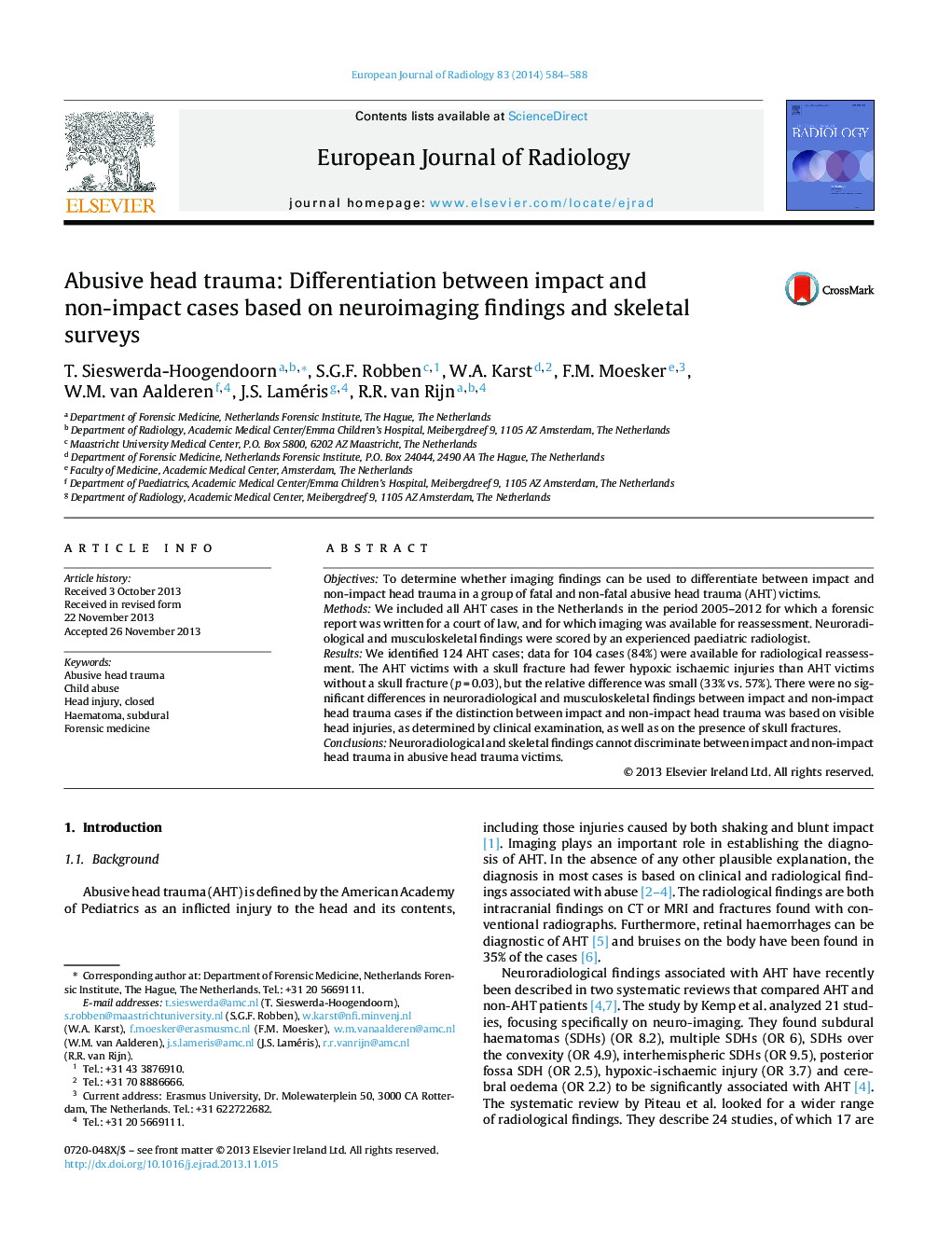| Article ID | Journal | Published Year | Pages | File Type |
|---|---|---|---|---|
| 4225342 | European Journal of Radiology | 2014 | 5 Pages |
ObjectivesTo determine whether imaging findings can be used to differentiate between impact and non-impact head trauma in a group of fatal and non-fatal abusive head trauma (AHT) victims.MethodsWe included all AHT cases in the Netherlands in the period 2005–2012 for which a forensic report was written for a court of law, and for which imaging was available for reassessment. Neuroradiological and musculoskeletal findings were scored by an experienced paediatric radiologist.ResultsWe identified 124 AHT cases; data for 104 cases (84%) were available for radiological reassessment. The AHT victims with a skull fracture had fewer hypoxic ischaemic injuries than AHT victims without a skull fracture (p = 0.03), but the relative difference was small (33% vs. 57%). There were no significant differences in neuroradiological and musculoskeletal findings between impact and non-impact head trauma cases if the distinction between impact and non-impact head trauma was based on visible head injuries, as determined by clinical examination, as well as on the presence of skull fractures.ConclusionsNeuroradiological and skeletal findings cannot discriminate between impact and non-impact head trauma in abusive head trauma victims.
